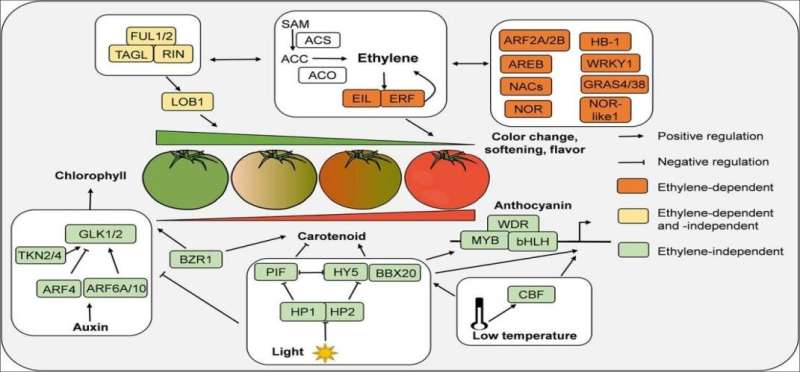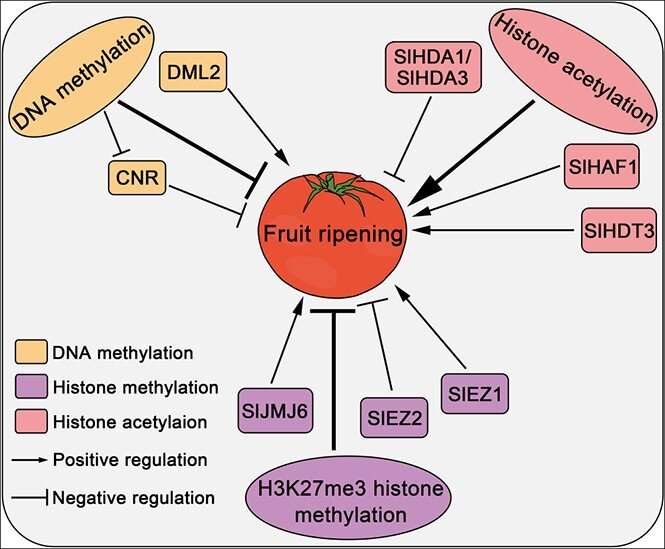Regulation of fleshy fruit ripening: From transcription factors to epigenetic modifications

Recently, Professor Chunxiang You from Shandong Agricultural University and her colleagues published a review article titled "Regulation of fleshy fruit ripening: from transcription factors to epigenetic modifications" in Horticulture Research.
"In this review, we discuss current knowledge of the transcription factors that regulate ripening in conjunction with ethylene and environmental signals (light and temperature) in the model plant tomato (Solanum lycopersicum) and other fleshy fruits. We emphasize the critical roles of epigenetic regulation," the authors say.
Ethylene induces a well-organized signaling pathway that coordinates plant growth and development and fruit ripening, and substantial evidence suggests that ethylene, together with other endogenous plant hormones, works with ripening-related TFs to coordinately regulate fruit ripening. This paper reviews the molecular mechanisms of TFs that regulate fruit ripening in ethylene-dependent and/or -independent manners.
Taking tomato as an example, TFs such as NACs, NOR, MOR-like1, HB-1, WRKY1, GRAS4/38, ARF2A/2B, and AREB upregulate the expression of ethylene and ripening-related genes in an ethylene-dependent manner, thereby positively regulating fruit ripening. The accumulation and degradation of chlorophyll during tomato ripening are regulated by a variety of TFs, including GLK1/2, ARFs, and TKN2/4, in an ethylene-independent manner, and this process is also modulated by the interplay of hormones and light signals. MADS-box TFs (RIN, FUL1/2, TAGL1) and ethylene comprise a regulatory circuit that regulates fruit ripening in an ethylene-dependent and independent manner.

Recent studies have shown that epigenetic modifications also play an important role in fruit ripening. DNA methylation, histone methylation, and acetylation are the major epigenetic modifications that influence fruit ripening, among which DNA methylation and H3K27me3 histone methylation are repressive epigenetic marks. N6-methyladenosine (m6A) is the most prevalent mRNA modification in eukaryotes, and recent studies have revealed a feedback loop between m6A mRNA modification and DNA methylation that regulates tomato fruit ripening.
In conclusion, the authors review a working model of phytohormones, ripening-related TFs, and epigenetic modifications for the dynamic regulation of tomato fruit ripening, which, as the authors state, "may serve as a guide when studying the mechanisms regulating ripening in other fruit species," and "guide new strategies for its effective manipulation."
More information: Xiuming Li et al, Regulation of fleshy fruit ripening: from transcription factors to epigenetic modifications, Horticulture Research (2022). DOI: 10.1093/hr/uhac013
Provided by Nanjing Agricultural University The Academy of Science


















